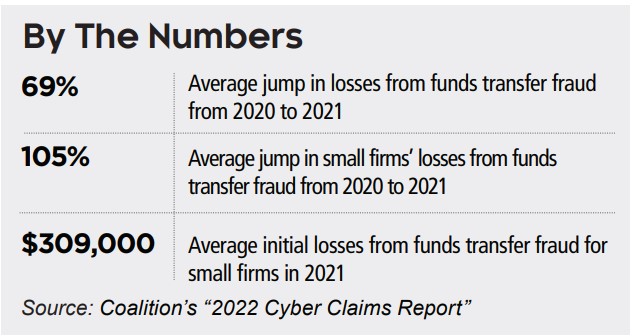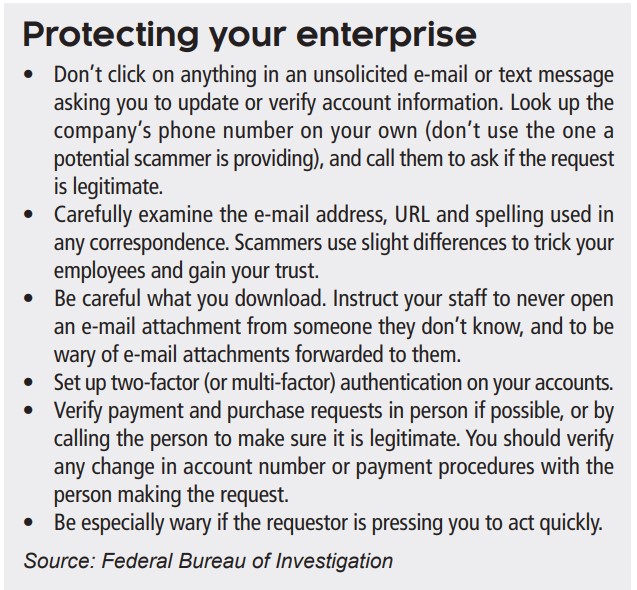EVERY YEAR starts with a flurry of new laws and regulations that California employers have to contend with.
And 2022 is no different as the California legislature had a busy year and the stresses of the COVID-19 pandemic resulted in more activity. The end result is another round of new laws that employers need to stay on top of so they don’t run afoul of them.
With no further ado, here are the top regulations and laws affecting California businesses.
1. Big change to Cal/OSHA citations
SB 606 adds two new Cal/OSHA violation categories for purposes of citations and abatement orders: “enterprisewide” and “egregious” violations. Cal/OSHA can issue an enterprise-wide citation that would require abating the violation at all locations. And the employer can face a maximum penalty of $124,709 per violation.
The law also authorizes the agency to issue a citation for an egregious violation if it believes that an employer has “willfully and egregiously” violated a standard or order. Each instance of employee exposure to that violation will be considered a separate violation and fined accordingly.
2. Permanent COVID standard
On Sept. 17, 2021, Cal/OSHA released a draft text for proposed permanent COVID-19 regulations, which if adopted would be subject to renewal or expiration after two years and would replace the current emergency temporary standard, which is set to expire Jan. 14, 2022.
Adoption is expected in the spring of 2022. Here’s some of what the draft standard would do:
CDPH rules – It would require that employers follow California Department of Public Health COVID-19 prevention orders.
Masks for unvaxxed staff – Unvaccinated staff must wear masks. Employers must provide masks when the CDPH requires them.
Outbreak rules – During an outbreak in the workplace, all staff would be required to wear face coverings regardless of vaccination status. Employers would need to provide respirators during major outbreaks to all employees.
3. COVID exposure notification
On Oct. 5, 2021, AB 654 took effect, updating requirements for what an employer must do if there is an outbreak of COVID-19 cases at its worksites.
This law somewhat curtailed earlier outbreak-reporting requirements as well as other required notifications for certain employers, and updated several provisions of the 2020 outbreak notification law, AB 685.
Here are some highlights:
• Employers have one business day or 48 hours, whichever is later, to report a workplace COVID-19 outbreak to Cal/OSHA and local health authorities.
• Employers do not need to issue these notices on weekends and holidays.
• When an employer has multiple worksites, it only needs to notify employees who work at the same worksite as an employee who tests positive for coronavirus.
• The new definition of “worksites” for the purposes of the law has been changed to exclude telework.
4. Expansion of the California Family Rights Act
AB 1033 expands the CFRA to allow employees to take family and medical leave to care for a parent-in-law with a serious health condition.
More importantly, it adds a requirement that mediation is a prerequisite if a small employer (one with between five and 19 workers) is the subject of a civil complaint filed by one of its employees.
5. Workplace settlement agreements and NDCs
A new law took effect Jan. 1 that bars employers from requiring non-disclosure clauses in settlement agreements involving workplace harassment or discrimination claims of all types. This builds on prior law that barred NDCs only in cases of sex discrimination or sexual harassment.
The new law expands that prohibition to all protected classes, such as: race, religion, disability, gender, age, and more.
One important note: While employees can’t be prohibited from discussing the facts of the case, employers can still use clauses that prohibit the disclosure of the amount paid to settle a claim.
6. OSHA vaccine mandate
As of this writing, Fed-OSHA’s new emergency COVID-19 standard was set to take effect on Jan. 1, with the most contentious part of the rule mandating that employees who work for employers with 100 or more staff be vaccinated or submit to weekly testing.
Unvaccinated workers would also be required to wear masks while on the job under the new rules, which have faced fierce challenges in courts.
The U.S. Court of Appeals for the Sixth District recently reversed a stay of the order as challenges to it are litigated, meaning the order can take effect as scheduled as the legal process challenging the rule proceeds.
The U.S. Supreme Court will hear expedited arguments Jan. 8 on the U.S. Court of Appeals for the Sixth Circuit’s decision to lift the Fifth Circuit’s stay.
7. Wage theft penalties
AB 1003, which took effect Jan. 1, added a new penalty to the California Penal Code: Grand Theft of Wages. The new law makes an employer’s intentional theft of wages (including tips) of more than $950 from one employee, or $2,350 for two or more workers, punishable as grand theft.
The law, which also applies to wage theft from independent contractors, allows for recovery of wages through a civil action.
As a result, employers (and potentially managers and business owners) would be exposed to both criminal and civil liability for wage and hour violations like failing to pay staff accurately and in a timely manner.
Review your compensation policies and practices to make sure you are in compliance with current wage and hour laws.
8. COVID cases may be included in X-Mods
The Workers’ Compensation Insurance Rating Bureau of California has proposed plans to start requiring COVID-19 claims to be included when calculating employers’ X-Mods.
The proposal, which would have to be approved by the state insurance commissioner, would bring to an end current rules that exclude the impact of COVID-19 workers’ compensation claims on X-Mods.
If approved, the new rule would take effect on Sept. 1, 2022. That means that employers will be held accountable for COVID19-related workers’ compensation claims and, if any employee needs treatment or dies from the coronavirus, it could result in higher premiums in the future.
9. Notices can be e-mailed
A new state law authorizes employers to distribute required posters and notices to employees via e-mail. SB 657 adds e-mail as a delivery option to the list of acceptable notification methods, which also includes mail.
Required posters and notices will still need to be physically posted in the workplace.
10. Warehouse quota rules
A new law that took effect Jan. 1 makes California the first (and only) state to regulate quotas used by warehouse employers.
While the bill was written with Amazon Inc. in mind, it affects all warehouses with 100 or more workers, and violations of the new law can be costly for an employer.
Under AB 701, warehouse employees must be provided with a written description of the quotas to which they are subject within 30 days of hire. Common quotas include the number of tasks the employee is required to perform, the materials to be produced or handled, and any adverse employment action that may result from a failure to meet the quota.
While employers may still implement quotas, employees are not required to meet a quota if it:
• Prevents them from taking required meal or rest periods,
• Prevents them from using the bathroom (including the time it takes to walk to and from the toilet), or
• Contravenes occupational health and safety laws. The law also bars employers from discriminating, retaliating or taking other adverse action against an employee who:
• Initiates a request for information about a quota or personal work-speed data, or
• Files a complaint alleging a quota violated the Labor Code.














